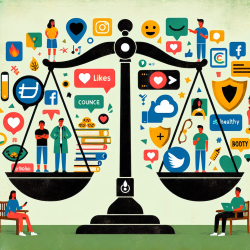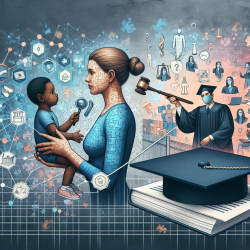Introduction
As a practitioner in the field of speech-language pathology, understanding the intersection of social media and adolescent mental health is crucial. The research article "Mitigating Harms of Social Media for Adolescent Body Image and Eating Disorders: A Review" by Mazzeo et al. (2024) provides a comprehensive overview of the negative impacts of social media on adolescent body image and eating behaviors. This blog aims to translate the findings of this research into actionable insights for practitioners seeking to improve outcomes for adolescents.
Understanding the Impact of Social Media
Adolescents today are deeply embedded in social media platforms such as Instagram, TikTok, and Snapchat. The research highlights a strong association between social media use and negative body image, particularly among adolescent girls. This connection is exacerbated by the unrealistic portrayal of body images online, leading to increased body dissatisfaction and disordered eating behaviors.
Strategies for Practitioners
Practitioners can play a pivotal role in mitigating the harms of social media on adolescents by implementing evidence-based strategies:
- Interventions: School-based interventions focusing on media health literacy can help adolescents critically evaluate social media content. Programs like "The Healthy Body Image" intervention have shown positive results in enhancing body esteem and reducing dietary restraint.
- Body Positivity: Encouraging adolescents to engage with body-positive content can foster self-esteem and body appreciation. However, practitioners should be aware of the potential pitfalls, such as reinforcing a focus on appearance.
- Policy Advocacy: Support for policy changes that regulate social media content and protect adolescents is essential. Practitioners can advocate for stronger regulations and age-appropriate content to safeguard adolescent mental health.
Encouraging Further Research
The research underscores the need for further studies to explore long-term effects and cultural variations in social media interventions. Practitioners are encouraged to engage in research initiatives that examine diverse populations and develop culturally sensitive interventions.
Conclusion
By integrating the insights from Mazzeo et al.'s review, practitioners can enhance their skills and contribute to better mental health outcomes for adolescents. Through interventions, body positivity, and policy advocacy, practitioners can help mitigate the negative impacts of social media on adolescent body image and eating behaviors.
To read the original research paper, please follow this link: Mitigating Harms of Social Media for Adolescent Body Image and Eating Disorders: A Review.










